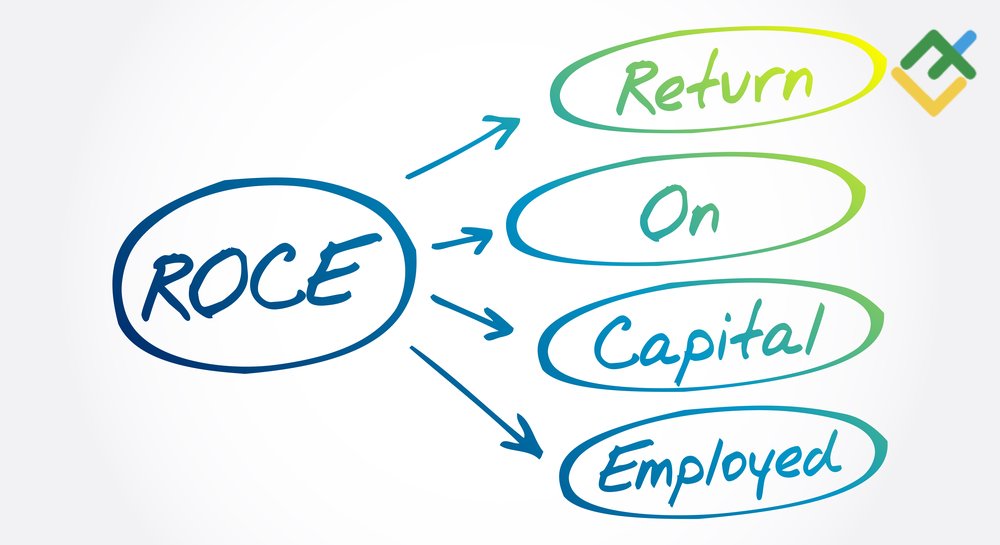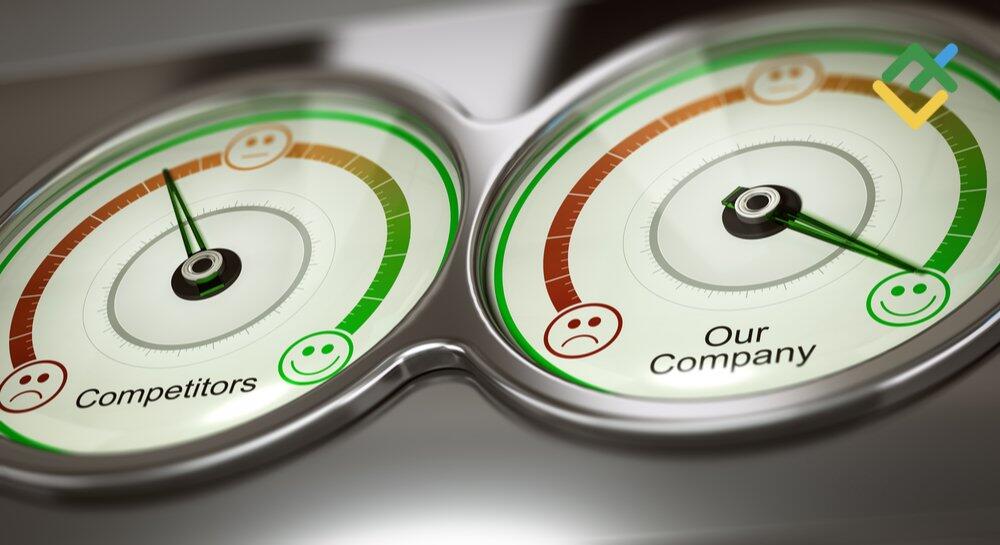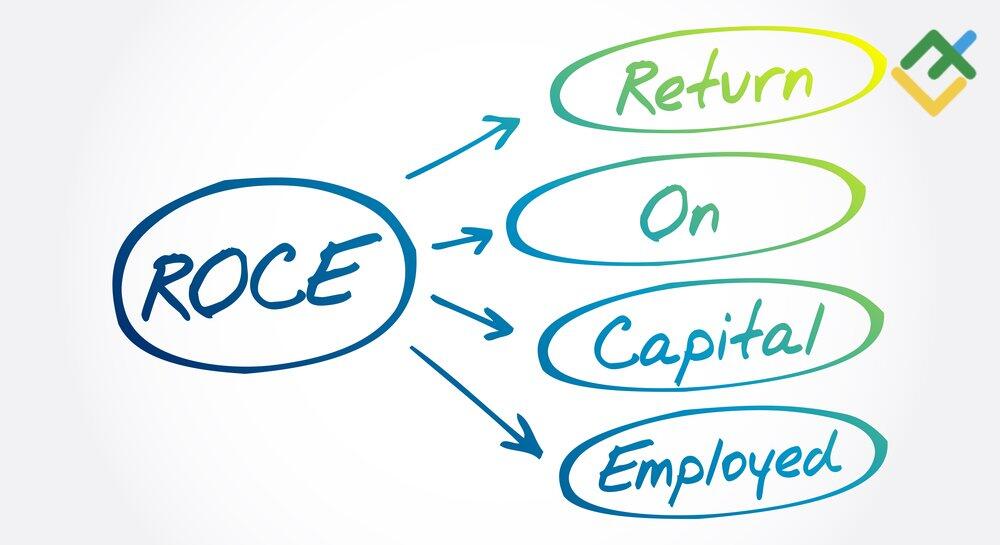
What should a wise investor consider when choosing which company to invest in? Usually, one analyzes income statements, as well as critical financial ratios, such as Return on Capital Employed (ROCE), Return on Invested Capital (ROIC), Return on Equity (ROE), and Return on Assets (ROA). These four essential ratios are extremely helpful when it comes to a well-defined evaluation of a company’s worth. Every successful investment decision ever made was based on the deep analysis of these indicators.
Today we will take a look at Return on capital employed (ROCE) — a vital metric used to compare a company’s net income with reference to the average capital employed in its business processes and assets.
The article covers the following subjects:
Major Takeaways
- ROCE stands for return on capital employed and means a profitability ratio calculated to measure the business efficiency in terms of total capital management.
- ROCE has much in common with ROIC, another profitability ratio used to evaluate the efficiency of invested capital.
- Key profitability ratios such as ROCE, ROE, ROA, and ROIC are often used to evaluate a company’s performance.
- Return on capital employed formula: ROCE = (EBIT / Capital employed) × 100%.
What Is ROCE and Why Calculate It?
Return on capital employed (ROCE) is one of the most important profitability ratios. It helps assess business viability, profit margins, and capital efficiency. To put it simply, this metric determines whether an entity can generate operating profit from the capital. Therefore, its primary goal is to establish the return percentage relative to the money invested in the respective endeavor.
The insightful nature of the ROCE ratio makes it one of the most popular profitability ratios used by many investors, stakeholders, and financial analysts. Comparing ROCEs of several companies enables the interested parties to choose the best option for investment.
Understanding the Essence of ROCE
ROCE formula is highly valued for its role in evaluating entities from capital-intensive industries, for example, oil production or transportation. Technically, the return on capital employed calculator discloses the approximate amount of operating profit generated by the company per dollar invested in the business. There are other profitability ratios, such as, for instance, return on equity (ROE). However, ROE is only used to evaluate a company’s profitability in terms of its stockholders’ equity. Unlike this index, ROCE considers the combination of debt and equity. Imagine how useful it can be when you aim to predict the price of a company’s stocks over the next two years. The higher the percentage of profit per $1, the better. Thus, the ROCE ratio indicates which companies have more robust profitability.
Business owners understand the importance of the return on capital employed (ROCE) indicator. Here is the trend: investors show a preference for the companies, which showed impressive ROCE ratio growth over the years. Guided by the principle “stable return on capital employed is okay, but rising ROCE is perfect,” they have a good point. Companies with highly volatile or low ROCE demonstrate a lack of financial expertise, and buying their stocks or securities shouldn’t be considered a smart investment.
Though ROCE can serve as an effective tool for evaluating a business’ profitability, there are also several other financial ratios exploited to analyze a company’s performance. They include ROIC (return on capital invested) profitability ratio, ROE (return on equity), and ROA (return on assets).
ROCE, ROA, ROIC, and ROE: Comparison Table
|
Basis |
ROCE |
ROA |
ROIC |
ROE |
|
Full Form |
Return on Capital Employed |
Return on Assets |
Return on Invested Capital |
Return on Equity |
|
Calculation |
Net operating income / Employed capital |
Net operating income / Owned assets |
Net operating profit/ Invested capital |
Net operating income / Average shareholders’ equity |
|
Signature Features |
This ratio is often used to compare the performance of different companies from the same sector, usually a capital-intensive one. |
While ROA, just like the other ratios on the list, is used to evaluate a company’s profitability, it mainly helps analyze how efficiently the assets from the company’s balance sheet are used. |
ROIC helps analyze a company’s performance by showing how successful an entity is at investing its capital. The ratio provides a more detailed view of the business’s profitability. |
ROE ratios range significantly and greatly depend on the industry. There is still a shortcut for analysts, who usually consider ROE poor if it’s less than 10%. A ROE of 14% is generally recognized as acceptable. |
ROIC (Return on invested capital) is another ratio that helps evaluate an enterprise’s economic efficiency in allocating its capital to favorable investments. The index sheds light on how successfully an entity uses its funds to generate profits by calculated return per each dollar invested.
ROIC and ROCE have a lot in common, as they are based on the same concept. However, their key components slightly differ. ROIC can be calculated by dividing net income after interest and tax expenses by the total amount of invested capital. The formula for ROIC calculation is presented below:
ROIC = Net operating profit after interest and tax / Invested capital
The main difference starts with the component “Net operating profit after interest and tax,” as this metric reflects the actual earnings of the company but also considers the entity’s tax obligations, while ROCE Formula doesn’t.
How to Calculate ROCE Formula (Return on Capital Employed)?
As we have already explained above, ROCE is an index used to analyze a company’s efficiency in terms of capital management. It can also help compare the profitability of several companies from the same industry. The key components needed for ROCE calculation are EBIT and capital employed.
All you need is to follow the return on capital employed formula given below:
ROCE = Earnings before interest and tax / Capital employed
For convenience, we can refer to the metric EBIT as “Net income statement before interest and tax.” EBIT (earnings before interest and tax or net income) is one of the popular financial ratios that displays the profit a company gets as a result of its business activity. It’s a profit of an entity before deducting interest or taxes. Calculating EBIT is possible with the following formula:
EBIT = Net income — Cost of goods sold — Operating expenses
Capital employed, sometimes referred to as funds employed, is the overall capital of a company put to use to generate profit. The value is calculated by subtracting current liabilities from the total assets number. The formula is as follows:
Capital employed = Total assets — Current liabilities
Click here to get your free template for ROCE formula calculation.
Going into Details: ROCE Example
Let’s consider two businesses from the same industry, for instance, transportation. Below you will find a ROCE Formula calculation for hypothetical companies: Mark & Co and Rocket Corp.
|
Basis |
Mark & Co |
Rocket Corp. |
Comments |
|
Revenue |
$24,695 |
$67,352 |
|
|
Total Assets |
$21,793 |
$153,789 |
|
|
Current Liabilities |
$5,449 |
$34,257 |
|
|
EBIT |
$5,958 |
$12,992 |
|
|
Financial Statement on Capital Employed |
$16,344 |
$119,532 |
Total Assets minus Current Liabilities |
|
ROCE (Return on Capital Employed) |
0.36 |
0.10 |
EBIT divided by Capital Employed |
At first glance, Rocket Corp. looks like a much more successful business than Mark & Co: it has solid revenue, more impressive EBIT and financial statements, and a big number of total assets under its control. The ROCE metric shows us a different side. The conducted analysis disclosed that Mark & Co uses its capital wisely and generates more profit in percentage terms.
-
Mark & Co: 36 cents per $1 (ROCE: ~36%);
-
Rocket Corp: 10 cents per $1 (ROCE: ~10%).
Key Takeaways
Financial soundness is hard to evaluate if you don’t see the big picture and analyze the most important indicators of profitability of an entity, such as income statements, in isolation. That’s why investors calculate ROIC and ROCE profitability ratios to relatively estimate a company’s potential.
The outcome of calculating the operating profit helps interested parties decide whether a company is worth investing in or not. If the business’s Return on capital employed has been demonstrating robust growth, that’s a good sign, indicating the management of the enterprises is going in the right direction and wisely investing the funds.
FAQs about ROCE
ROCE or Return on capital employed refers to one of the most popular profitability ratios used to assess how efficiently a company manages its funds. This index reveals whether a company can generate profits from the capital it puts to use. The higher ROCE is, the better.
Even though there is no generally accepted standard for any industry, a higher return on capital employed means that a company is pretty good at managing its capital. However, there are some pitfalls you should be aware of: a high ROCE number may indicate not a company’s profitability but the fact it has a lot of cash.
Other ratios, such as return on assets (ROA) or return on equity (ROE), are used to evaluate a company’s profitability relative to isolated indicators: the value of controlled (fixed) assets and shareholders’ equity, respectively. Unlike these indices, return on employed capital computation helps see a bigger picture by considering both debt and equity.
The capital employed return index is widely one of the most precise profitability ratios. Investors calculate this ratio to decide whether a company’s stocks will be a valuable investment or not.
Interested parties calculate return on capital employed (ROCE) using the following formula: Net operating income before interest and tax / Capital employed, where the first component is generally referred to as EBIT (earnings before interest and tax). The capital employed figure includes both the money that shareholders have invested in the company (equity) and the money that the company has borrowed (current liabilities).
The higher the ROCE ratio, the more profitable and efficient a company is considered to be. Investors often use the ROCE metric to compare different companies in the same industry. For example, if two companies have similar balance sheets but one has a higher ROCE ratio, it may be a better investment. However, it’s important to keep in mind that the ROCE can vary depending on the industry a company belongs to. For example, a high ROCE ratio might be less impressive for a utility company than for a manufacturing company.
The content of this article reflects the author’s opinion and does not necessarily reflect the official position of LiteFinance. The material published on this page is provided for informational purposes only and should not be considered as the provision of investment advice for the purposes of Directive 2004/39/EC.
{{value}} ( {{count}} {{title}} )
This post is originally published on LITEFINANCE.






